Women of Color in the Arts organizes and mobilizes women of color cultural workers
Women of Color in the Arts (WOCA) just celebrated its 10-year anniversary this past January at the annual Association for Performing Arts Professionals (APAP) Conference in New York, where the organization held its first formal meeting back in 2010. The milestone has had co-founder and founding director Kaisha Johnson doing a lot of reflecting. “It has not been an easy process, but it has been a very fruitful one,” she says.
The seeds were germinating for WOCA from the moment she started working in the arts when she was just 13 or 14 years old. She began her career in the art world as a classically-trained violinist. By the time she was in high school, she knew she was not going to be a classical musician; that would not be her path.
“I knew that to become a professional in classical music, there were very few opportunities available. You either went to an orchestra or an ensemble. I also knew I wasn’t seeing many people in large orchestras who looked like me, and that that was problematic on many levels.”
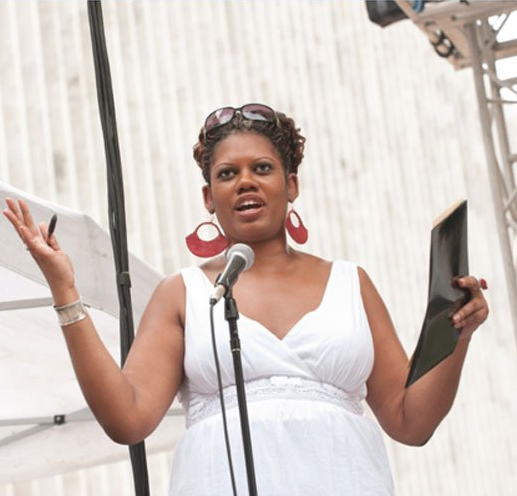
Her path instead led her to become an arts administrator. She has worked with various arts organizations in a multitude of capacities over the years, in almost every facet of administration. But it was while she was working for an organization in New York called the Center for Traditional Music and Dance that she really saw the necessity for an organization like WOCA, an organization for people who looked and identified as she did that created a space of mutual support.
“I was doing a lot of organizing in immigrant artist communities to uplift them and present their work to the masses, and also preserve and promote their own cultural traditions,” Johnson explains. “I traveled all around the country and world connecting with communities, making sure I had the knowledge and fortitude to understand what each community needed here in the U.S. and what it took to raise their visibility on stages across the country. So I traveled and met a lot of administrators and arts and cultural institutions from doing that work, and I saw little to no people of color in leadership roles, and even fewer women of color. But we existed, and I knew there had to be space created for us so we could mobilize.”
WOCA is based in New York but serves people all over the country, and has international members as well.
“The issues regarding racial equity are not specific to the U.S.,” Johnson points out. “WOCA also has members in the Caribbean, Europe, Africa, Latin America, Asia…it’s really quite amazing.”
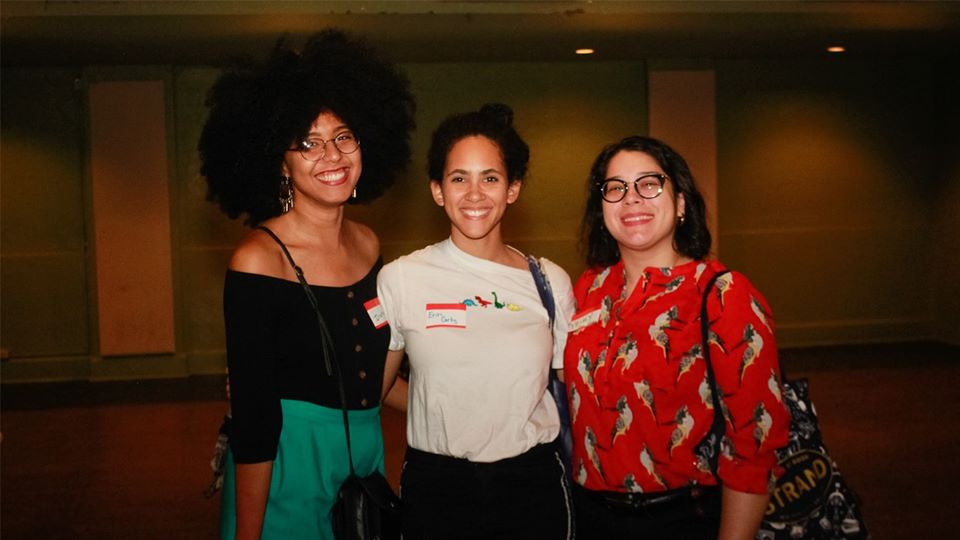
From the beginning, the goal of WOCA was to organize and mobilize women of color who were working as cultural workers in the field of administration.
“Organizing is a long, sometimes tedious process because it’s really about building community,” Johnson continues. “When we started to build that community and hear about individual and collective needs, we knew we needed to put things in place to support those needs and the challenges that women of color face throughout the country, and world.”
One of the greatest resources that a community has is the community itself, she says. WOCA is a self-sustaining organization because of its member community.
“We have been able to sustain ourselves with the gifts, talents, and financial resources of our membership, and that’s how we’ve been able to sustain this community for the last 10 years,” she says. “It’s really phenomenal, but it’s not the way a ‘traditional’ arts organization would be run.”
WOCA offers a variety of programming to its members—which includes community gatherings throughout the U.S. as well as panels, webinars, and an annual forum—but it is the “Leadership Through Mentorship” program that Johnson is most proud of.
“This leadership training is exclusively aimed at cultivating women leaders of color, looking at addressing their specific needs as they are often marginalized in the field, and giving them tools to help foster equality in their work environment,” says Johnson.
It is designed for and by women of color, which is an important distinction to make—Johnson has often witnessed others wanting to create more inclusivity in the arts, saying, “Let’s help folks of color and help them get on their way,” without thinking critically about who is helming those efforts or having those conversations with actual leaders of color.
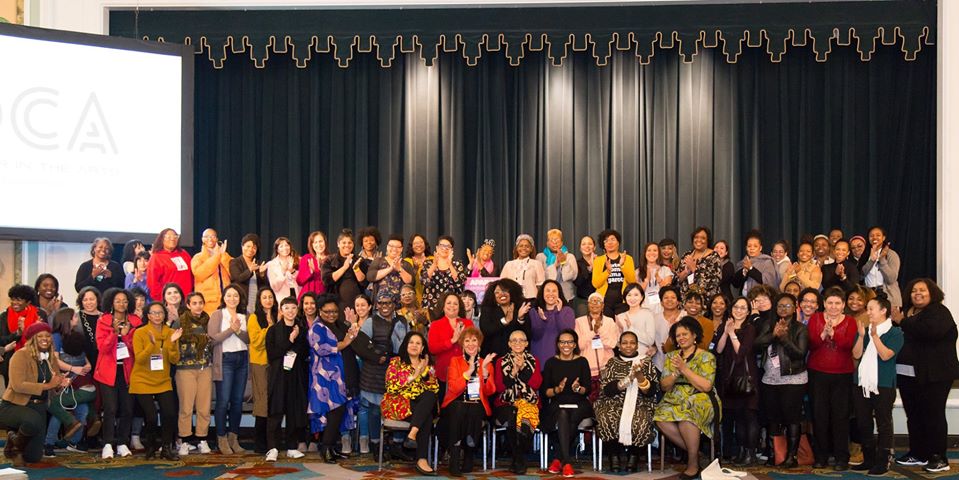
We are arguably seeing a giant wave of this once again in the current moment of abject crisis we find ourselves in as a society, as protests clamoring for the most basic acknowledgement of the right to human life and an end to militarized policing and the ongoing execution of Black lives at the hands of police have prompted what currently appears to finally be a cultural tipping point (though, at the current time, we have yet to have the benefit of hindsight to know that for sure).
Arts organizations have not been alone in expressing their solidarity with the Black Lives Matter movement in recent weeks; there has been a deafening outpouring of solidarity expressed by nonprofit organizations, publicly traded companies, and private businesses alike ranging from tech giants to TV networks, national retail chains to independent restaurants, car rental agencies to multinational alcohol conglomerates. You could be forgiven for seeing the flood of pro-Black Lives Matter messaging and assuming that racism isn’t an issue in this country after all.
But the real work lies in actually doing, not just saying, as Johnson outlined in a June 4 post on Medium. (Writer’s note: My conversation with Johnson occurred in early March, before the brutal public murder of George Floyd and the protests that followed.)
“As if moving to some syncopated symphony, arts organizations and cultural institutions across the country are parading out statements of ‘solidarity’ in these moments,” she writes. “I’ve stopped counting (and reading) the endless emails I’ve received from arts organizations touting how they stand in solidarity with Black people. Statements which proclaim they’re shutting down their operations and programming — galas and town halls and education programs are ‘going black.’ How cute. Now, all of a sudden, historically and predominantly white arts institutions want to be ‘in solidarity’ with Black folks? I know what solidarity looks like. And it ain’t this.”
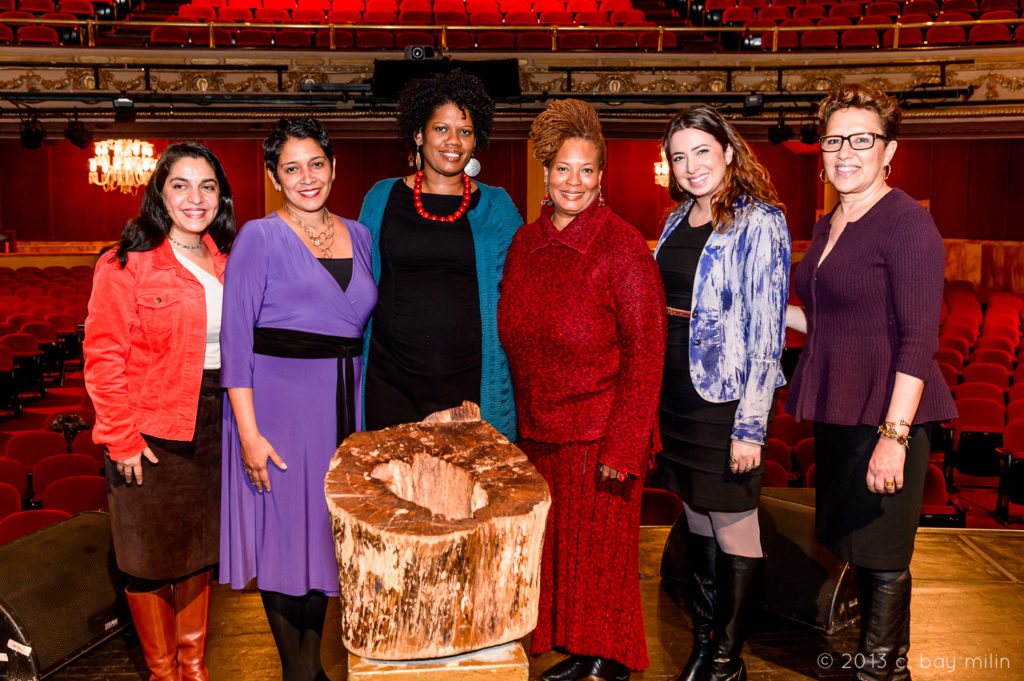
WOCA’s leadership program is the first program of its kind in the arts field that specifically addresses the issues of women of color.
“We really understand that the success of women of color in the workplace is largely predicated on the advocacy of women of color in the workplace, so a big focus is put on how do we work on dismantling institutional and professional bias in our respective lives,” Johnson says. “What’s happening in our professional lives is often a mirror for what’s happening in personal lives.”
At the heart of this program is WOCA’s mission to make space for continual community building in order to help promote solidarity and widen visibility for women of color in the arts field. It is WOCA’s longest-running program, and 70 people have gone through it—for a small grassroots organization, that’s a substantial number.
WOCA also produces the Women’s Leadership Forum, an annual gathering held in conjunction with the APAP conference that addresses the pressing issues that women working in the arts face, from finding a work-life balance to facing institutional biases in the form of racism and sexism, and how all of those systems of oppression impact women and women of color. The forum is open to all women.
“We understand the need for us to be in conversation not just with women of color and not just allies and supporters,” says Johnson. “We need accomplices in the work. We are building a community of women across the country that are dedicated to really creating racial and cultural equity in their communities.”
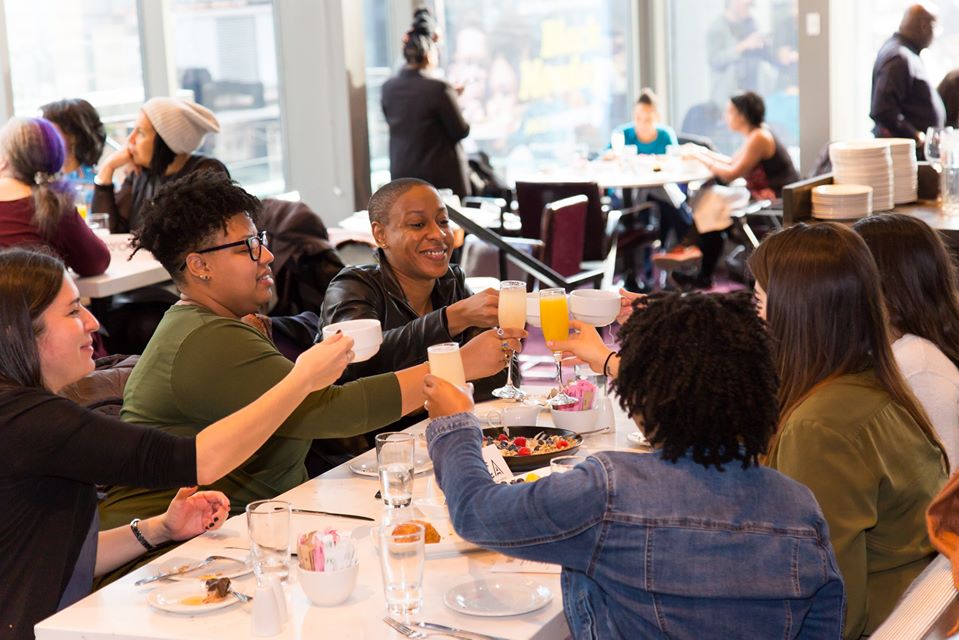
WOCA has about 400 full-fledged members, but that number doesn’t include affiliates who are also attached to the work but haven’t necessarily yet taken the next step towards membership (specifically, paying dues to support the organization). While memberships are the backbone of support for the work of WOCA, Johnson emphasizes that you don’t have to be a member to participate in many of their programs, like the community gatherings.
The community gatherings are really how WOCA got its start as an informal organization back in 2008 before formalizing in 2010. At its core, WOCA is a grassroots organization, and Johnson says they really wanted to create different circles of fellowship for women of color across the country.
“As an organization we look at the macro, but we also want to find ways to support the micro in cities where our members reside,” she explains. “We designed these meetings to help arts administrators and cultural workers of color to first identify who they are [and connect with each other]. We really wanted to help ignite this dialogue on how women cultural workers can collectively strengthen their participation in the arts community. Historically, the arts field is a very white field run by white men. When people come into the field and are trying to figure out how they will be able to sustain themselves with the historically low wages people in the arts work for, we felt we needed to create some sort of support to help buttress [their work in these roles and their efforts to navigate those roles as women of color].”
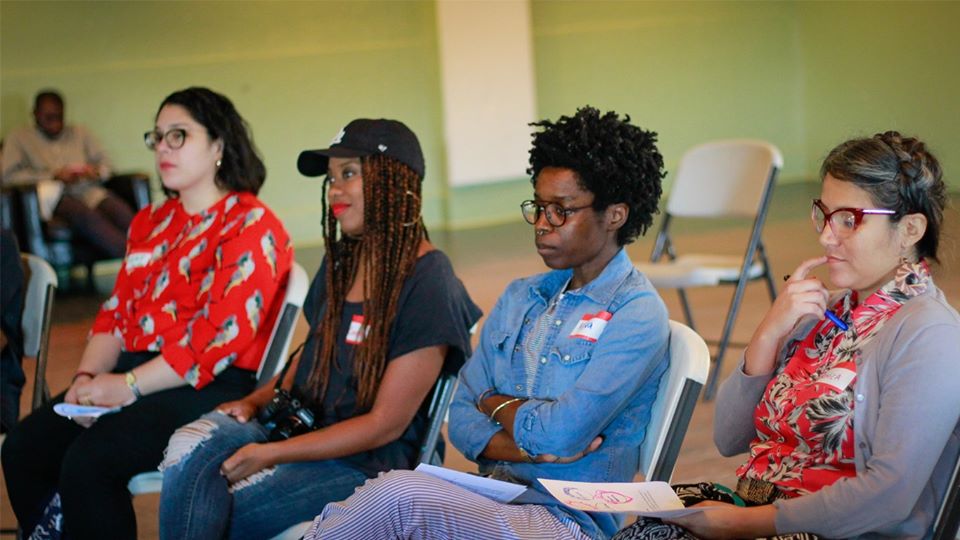
Johnson says that in the over 20 years she has worked in the arts and all the traveling she has done throughout the country, one thing that has resonated with her is that no matter where she is in the country, the issues and challenges for women of color cultural workers remain the same; regardless of it’s a major city, a rural town, or a border town. Those issues and challenges might manifest differently, or more or less obviously, but they are, in essence, the same. Part of the work of WOCA is to address the feelings of disconnect women of color often have in smaller cities and towns where they feel isolated—to help in coalition-building and harnessing the collective power and resources of women of color as they face the omnipresent forms of systemic oppression in racism and sexism in their field.
“When women are connected and hearing from other women of color in the field, they’ll feel that, ‘Oh wow, it’s not just me. Now I don’t feel so isolated like I’m working in a silo; I can get through the day-to-day, manage my career, and mitigate some of the things that cause me not to be seen as a valuable contributor to this work.’ That’s what’s really resonated for me.”
When asked if she has seen much change in the art world in terms of how women of color are employed, perceived, treated, promoted, and otherwise valued in the years since Trump became president, Johnson says a lot of what she has seen is just business as usual. The Trump presidency may be a symptom of the rot that has infected America since its inception, but it is certainly not the cause.
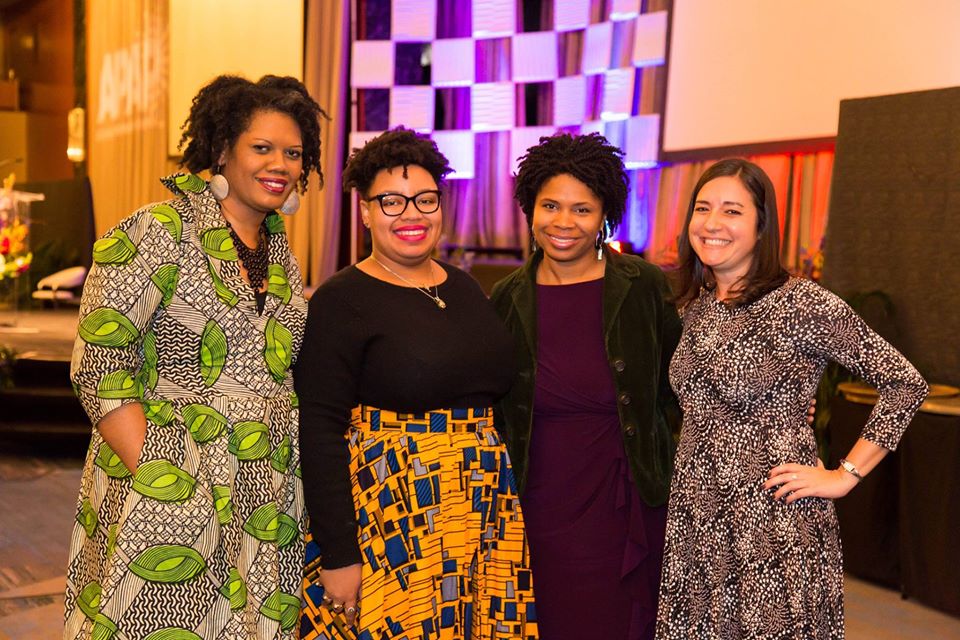
“I feel like there has been a marked distinction in how the arts field has been responding to the events since the election, recognizing that it’s not one man that is controlling things but really looking at the system that leads to oppression,” she says. “Organizations and cultural institutions are starting to think more critically about their role: ‘How have I perpetuated some of these systems and what can I do to dismantle some of these systems so we can be more inclusive and work to have more equity?’ I have seen that shift in the field, but if we are to make a change in our field there has to be a real shift; this can’t be the moment du jour.”
In addition to building their membership, coalescing and organizing with women of color, WOCA also provides consulting work with arts institutions to help them to see how they play into some of the oppressive systems that surround women of color every day and what they can do to mitigate and dismantle some of those systems to put into place more equitable practices.
“It’s about a whole system,” she says. “We’ve got to figure out as a community how to change those systems. The problem is that in order to change systems you have work inside of the system while also dismantling it. That is the hard and taxing and tedious work, but in the arts we have the capacity to do it because we captivate people’s attention in a way that it isn’t captivated through other platforms. We have to figure out as a community of arts and culture workers what our part is going to be and put in the work, which means you might not see the fruits of your labor for generations. But know that we are doing the work and tilling the soil for there to be change in our field for generations to come.”

(1) How do you like to collaborate?
My collaboration process is really about listening and learning, and that’s how we identify who is going to be a good collaborator.
(2) How do you start a project?
The same as collaborating: just doing a lot of listening to see what the challenges are and then how we can work to address those challenges.
(3) How do you talk about your value?
The work of Women of Color in the Arts is rooted in values and our values lie in remaining steadfast to the integrity of who we are as a grassroots organization. Our values lie in the power of community: self-determination, collective work, and responsibility. Our values are around self-determination, how we cultivate racial equity, fostering critical dialogue, and the power of collective intention and action and how those things are going to shift the field. We value the voices, expertise, and experience of women of color. We value partnerships and collaboration and believe that listening and learning are the things that are going to solve the world’s problems. We value community, that’s one of the most important values, but most importantly, we value women of color. Our job is to help amplify these values.
(4) How do you define success?
Success is a tricky word. It’s based on context. It’s based on history. You might enter into one situation and say to yourself, “That was really successful,” while someone else assessing the situation is saying, “That didn’t work at all; that was really bad.”
Success is a pathway that you’ve created that leads you to feel that you have accomplished or are working to accomplish what you set out to do. It may not be quantifiable. It’s really about feeling, “I set out to do this thing. Am I working towards it, on the way, or have I accomplished that thing?” And in that you will have failure, too. Failure for me is just an opportunity to learn and to try again. All of that is contextual based on people’s perspectives and how they look to interpret it.
(5) How do you fund your work?
Our work is funded by the people. Power to the people, to all people. We are so appreciative to our members and supporters and are very proud of the fact that we’ve been able to sustain this people-powered organization just through the collective resources of the people that believe in women of color and specifically women of color.
It takes a lot of effort, but at the same time ultimately it sends a message to people that collectively we can do anything that we put our minds to. I am not averse to receiving institutional funding—as long as we remain steadfast to our values and the institutions are in line with those values and understand the need of our work to be driven and centered by people, it’s not a problem. However, when organizations become dependent on funding that can dry up it’s problematic because we’re relying on this handout to get us through to the next stage when ultimately as a field we haven’t put a lot of attention on sustainability. How do we right some of the wrongs that have happened in the world? Bloomberg spending $500 million [on a breathtakingly failed presidential campaign] could have solved so many of this country’s problems. What about being able to sustain communities? It’s not about giving someone a handout; it’s about helping them to become self-sustaining.
WOCA this past year was at the Grantmakers in the Arts (GIA) Conference. This was the first time GIA held a people-of-color-centered space all about creating space for funders of color—seeing where they are, what they talk about, what their needs are. So there was a lot of dialogue around this very issue, specifically around helping to build and sustain organizations run by people of color that have historically not been funded or have been underfunded because that money was going to larger or historically white institutions, which may have power and influence but they aren’t the ones on the ground really doing the work that creates change in the world.
